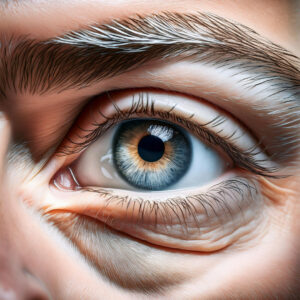Aperture Explained: Think of It as Your Camera’s Pupil for Controlling Light and Depth
Aperture is the size of the opening in the lens through which light enters the camera.
- Measured in f-stops (e.g., f/2.8, f/5.6).
Think of aperture as the pupil of an eye.

In low light, your pupil gets larger to let in more light (low f-stop like f/2.8).
In bright light, your pupil gets smaller to let in less light (high f-stop like f/16).
| Photography Scenario | Suggested Aperture (f-stop) | Description |
| Bright Sunny Day | f/8 – f/16 | Reduces the amount of light, increases depth of field (more of the scene in focus). |
| Cloudy Day | f/5.6 – f/8 | Balances light intake with moderate depth of field. |
| Portraits (Blurry Background) | f/1.4 – f/2.8 | Creates a shallow depth of field, making the subject stand out against a blurry background. |
| Group Photos | f/4 – f/8 | Ensures all subjects in the group are in focus. |
| Landscape Photography | f/8 – f/16 | Provides a large depth of field to keep both foreground and background in sharp focus. |
| Indoor Photography (Good Light) | f/2.8 – f/5.6 | Allows more light in, suitable for well-lit indoor environments. |
| Indoor Photography (Low Light) | f/1.8 – f/2.8 | Maximizes light intake, useful for poorly lit indoor settings. |
| Night Photography | f/1.4 – f/2.8 | Essential for capturing low light scenes without a flash. |
| Macro Photography | f/2.8 – f/5.6 | Depends on the desired depth of field; smaller apertures (higher f-stops) can increase depth of field. |
| Action/Sports Photography | f/2.8 – f/4 | Allows faster shutter speeds by letting in more light, helping to freeze motion. |
| Street Photography | f/4 – f/8 | Balances light intake with a moderate depth of field to capture scenes quickly and effectively. |
| Architectural Photography | f/8 – f/16 | Ensures the entire structure is in focus, from foreground to background. |
